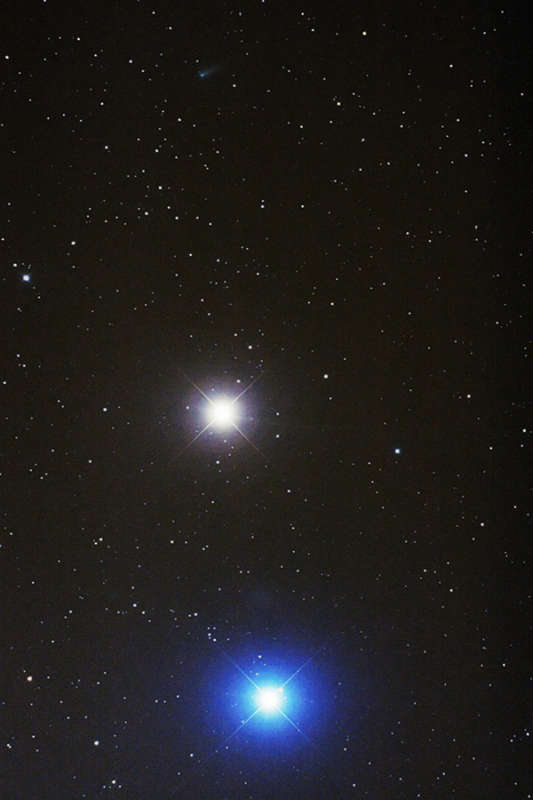Credit & Copyright: Pete Lawrence
(Digital-Astronomy)
Explanation:
In order top to bottom
this celestial
snapshot features Comet ISON,
planet Mars, and Regulus, alpha star of the constellation Leo,
in the same frame.
The scene spans about 2 degrees near the eastern horizon in
early morning skies of October 15.
Closest of the three, the much heralded
Comet ISON (C/2012 S1)
is by far the faintest at 14 light-minutes (1.7 AU) away.
Mars is only slightly farther from our fair planet.
About 16.5 light minutes (2 AU) away its
normal ruddy color
is washed out in the exposure.
Regulus outshines both comet and planet from a distance of 75 light-years.
Just above Regulus, the very faint smudge of light
is actually the Leo I dwarf galaxy, 800,000 light-years
away and almost lost in the glare of the
bluish hued bright star.
Comet ISON is expected to grow brighter, though.
How bright is still
not clear,
but not as bright as a Full Moon in night skies.
Estimated to be 1 to 4 kilometers in diameter,
ISON's nucleus might
substantially survive its very close encounter with the
Sun on November 28.
If so, the comet
will climb back above the eastern horizon in
planet Earth's northern hemisphere
before dawn in early December.
1999 2000 2001 2002 2003 2004 2005 2006 2007 2008 2009 2010 2011 2012 2013 2014 2015 2016 2017 2018 2019 2020 2021 2022 2023 2024 2025 |
Yanvar' Fevral' Mart Aprel' Mai Iyun' Iyul' Avgust Sentyabr' Oktyabr' Noyabr' Dekabr' |
NASA Web Site Statements, Warnings, and Disclaimers
NASA Official: Jay Norris. Specific rights apply.
A service of: LHEA at NASA / GSFC
& Michigan Tech. U.
|
Publikacii s klyuchevymi slovami:
regulus - dwarf galaxy - komety - Mars - Regul
Publikacii so slovami: regulus - dwarf galaxy - komety - Mars - Regul | |
Sm. takzhe:
Vse publikacii na tu zhe temu >> | |
